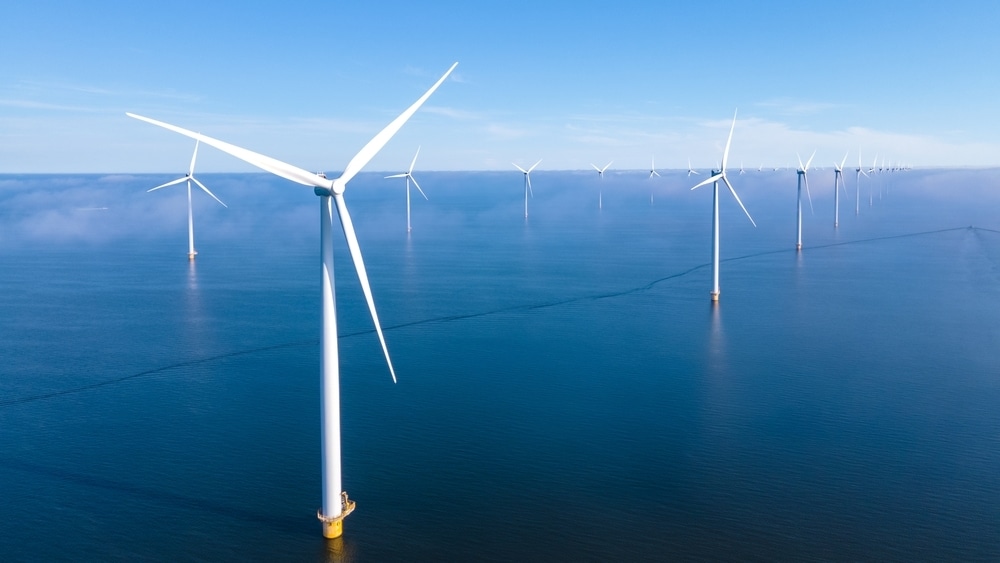This Energy Explained post represents the research and views of the author. It does not necessarily represent the views of the Center on Global Energy Policy. The piece may be subject to further revision. Contributions to SIPA for the benefit of CGEP are general use gifts, which gives the Center discretion in how it allocates these funds. Rare cases of sponsored projects are clearly indicated.
For a full list of financial supporters of the Center on Global Energy Policy at Columbia University SIPA, please visit our website at Our Partners. See below a list of members that are currently in CGEP’s Visionary Circle. This list is updated periodically.
It’s hard to be an offshore wind optimist these days. Four large offshore wind generation projects have been canceled in the past several weeks,[1] several more are on the ropes,[2] and future offshore wind costs are projected to be more expensive, based on the outlook from the developers.[3] Blame a toxic cocktail of increasing steel costs, higher cost of capital, and the seizing up of global supply chains, all driven by macroeconomic conditions, the pandemic, and a war in Europe.
Yet there are glimmers of hope amid the (admittedly painful) lessons, which may put the next generation of offshore wind developments on a firmer footing. And there will be a next generation—New York recently announced a 4 gigawatt (GW) offshore wind procurement;[4] Connecticut, Rhode Island, and Massachusetts plan to jointly procure 6 GW;[5] and the next round of procurements for up to 4 GW is pending in New Jersey.[6]
First, state regulators made a powerful pro-consumer statement when they declined to renegotiate prices at turbine-point. Allowing developers to “win” a procurement and later renegotiate prices is “fundamentally inconsistent” with ratepayer protection[7] and would undermine the benefits of competition. One of the promises of offshore wind is that the costs are fixed and predictable over a number of years, which helps insulate consumers from volatility in energy markets. Canceling contracts and restarting the bidding process requires project developers to sharpen their pencils and come in at a reasonable price (or risk losing out to competitors). Or, as the chairman of the New York Public Service Commission, Rory Christian, put it, “[w]e signal that ratepayer funds are not an unlimited piggy bank for anyone’s disposal.”[8]
Second, one silver lining of the latest delays is that they may allow states to coordinate planning the reinforcements to the electric grid necessary to accommodate the next generation of offshore wind projects.[9] An important lesson of the past few years is that proactive transmission planning lowers offshore wind costs, accelerates deployment timelines, and decreases environmental impacts.[10] Providing states up and down the Eastern Seaboard the opportunity for these transmission expansion programs to catch up with generation procurement efforts may be an unexpected boon.
Third, much of the work done to develop the canceled projects won’t be wasted. Experience gained in permitting and sitting efforts, geotechnical analysis, cable routes, and other engineering work will continue to inform future projects. Without underestimating the complexities of retooling projects in the complicated regulatory permitting regime that applies to offshore wind, it is fair to expect the next round of permits to be easier and quicker, given that they can build off previous approvals.
Fourth, there’s slow but steady progress in one of the most epically challenging parts of the offshore wind experiment: building a United States–based supply chain. Developers have made significant commitments to getting port facilities ready, identifying Jones Act–compliant vessels, building nacelle and blade facilities, expanding job training efforts, and more. Regulators have learned a lot about what it takes to make these efforts a reality, and these hard lessons won’t be wasted. Future efforts may involve multi-state supply chain agreements or include supply chain commitments that aren’t directly tied to the success of any particular generation project.
Fifth, regulators—and developers—have learned a lot about how to structure effective offshore wind contracts over the past three years. The first-generation wind contracts were written when the world was awash in cheap capital. Future contracts are likely to include enhanced liquidated damages clauses and inflation indexes, which automatically adjust power purchase rates—up or down—as inflation changes. These increasingly sophisticated contracts will help avoid a repeat of the problems that have plagued this round of projects.
These hard-earned lessons are likely to lead to a stronger offshore wind industry in the longer term. However, these treacherous waters have to be carefully navigated. A danger for the offshore wind industry is that it could squander the enormous trust that has been placed in it, with state regulators and politicians looking to other sources of clean energy. The goal for proponents of offshore wind is to take the bitter lessons associated with these project failures and emerge stronger.
CGEP’s Visionary Circle
Corporate Partnerships
Occidental Petroleum Corporation
Tellurian Inc
Foundations and Individual Donors
Anonymous
Anonymous
the bedari collective
Jay Bernstein
Breakthrough Energy LLC
Children’s Investment Fund Foundation (CIFF)
Arjun Murti
Ray Rothrock
Kimberly and Scott Sheffield
Notes
[1] Contracts supporting two New Jersey projects, a project in Connecticut, and two projects in Massachusetts, have been canceled. https://www.nytimes.com/2023/11/01/business/energy-environment/offshore-wind-farm-new-jersey.html; https://www.reuters.com/sustainability/why-us-offshore-wind-industry-is-doldrums-2023-09-06/
[2] The New York Public Service Commission recently denied a request from three wind farms to increase power costs by 54%. https://documents.dps.ny.gov/public/MatterManagement/CaseMaster.aspx?MatterSeq=48235&MNO=15-E-0302
[3] https://www.utilitydive.com/news/new-york-clean-energy-contracts-change-prices-orsted-equinor-nyserda-psc/692415/
[4] https://www.governor.ny.gov/news/governor-hochul-announces-nations-largest-ever-state-investment-renewable-energy-moving
[5] https://www.mass.gov/doc/ma-ri-ct-offshore-wind-procurement-collaboration-memorandum-of-understanding/download
[6] https://njoffshorewind.com/third-solicitation/solicitation-documents/
[7] Chair Rory Christian, New York Public Service Commission, https://dps.ny.gov/system/files/documents/2023/10/pr23105.pdf
[8] https://www.politico.com/news/2023/10/12/new-york-rejects-offshore-wind-onshore-renewable-request-for-bigger-payments-00121231
[9] https://www.energypolicy.columbia.edu/an-offshore-wind-super-grid-for-the-east-coast/
[10] “In the Matter of the Second State Agreement Approach for Offshore Wind Transmission,” Docket No. QO23030129, p. 9 (recommending “that the Board work with other East Coast states that have OSW programs and gauge their interest in coordinating on a regional OSW transmission solution, up to and including a regional OSW ‘backbone’ transmission system”) and p. 10 (directing “Staff to accelerate engagement with other states, regional grid operators, federal regulators, and other interested stakeholders about a regional OSW transmission solution.”)










